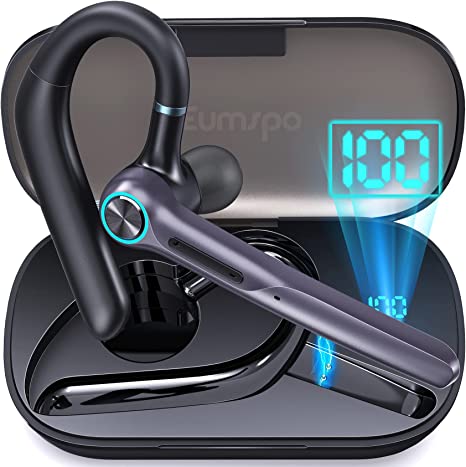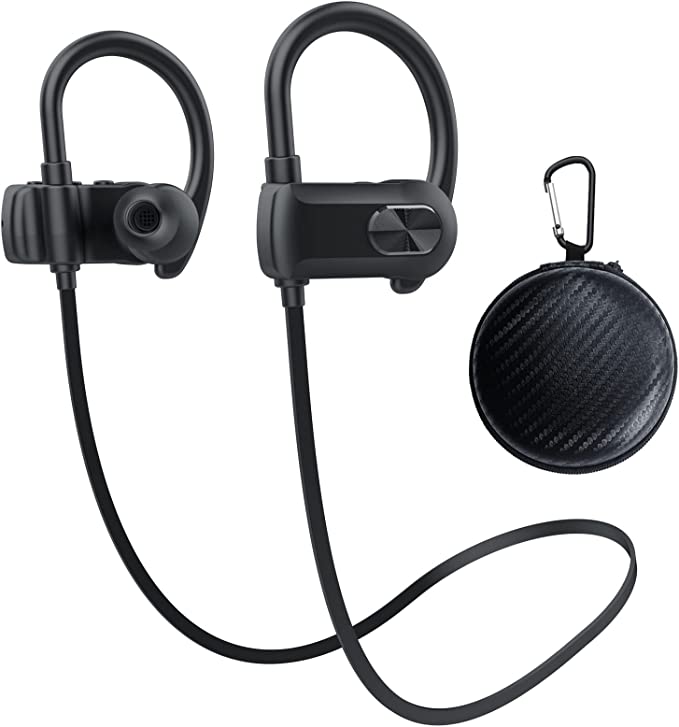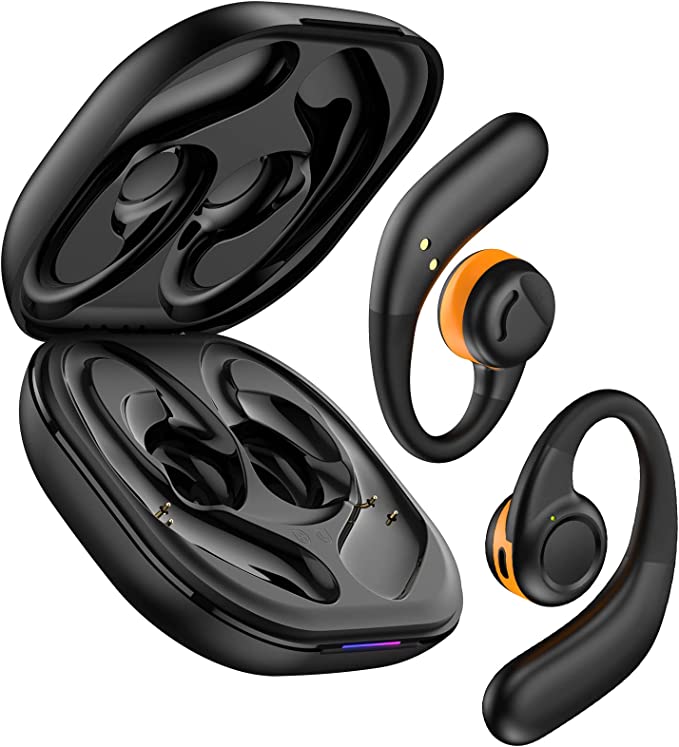Our daily lives unfold against an ever-complexifying sonic backdrop. From the gentle hum of a distant highway to the immediate chatter of a bustling café, the roar of an eighteen-wheeler’s engine to the collaborative buzz of an open-plan office, sound is a constant companion. Within this symphony—sometimes harmonious, often cacophonous—lies a fundamental human need: the desire for clear communication and focused personal auditory space. We crave the ability to connect, to be heard, and to hear, without the world’s ambient clamor intruding. It’s in this pursuit that personal audio devices, like wireless headsets, have evolved from niche accessories to indispensable tools. Today, we’ll delve into one such device, the Eumspo G3 Wireless Headset, not as a product review, but as a fascinating case study, an opportunity to peek behind the curtain and explore the applied science that makes our modern audio experiences possible.

Act I: The Art of Isolation – Understanding Dual-Microphone Noise Cancellation
Imagine trying to have a heartfelt conversation next to a construction site, or attempting to convey critical information while a dozen other discussions swirl around you. This is the daily audio assault many face. Our auditory system is a marvel of biological engineering, capable of discerning subtle nuances in sound, but it can be overwhelmed. This is where technology, particularly in headsets like the Eumspo G3, steps in with features like “Dual Mic Noise Canceling.”
But what does this truly mean? Why are two microphones often significantly better than one when it comes to call clarity? Let’s start with a quick primer. Microphones, often tiny Electret Condenser Microphones (ECMs) in modern headsets, are essentially transducers: they convert sound waves—those invisible vibrations in the air—into electrical signals. An “HD Microphone,” as mentioned in the G3’s description, generally suggests a microphone designed for a wider frequency response or better sensitivity, aiming to capture voice more faithfully.
Now, introduce a second microphone into the equation. The core idea is to give the headset more information about the sound environment. One microphone, typically positioned closer to the mouth (often at the end of a boom, as with the G3’s “rotatable boom mic”), is optimized to capture your voice. The second microphone (or sometimes more) is strategically placed to better pick up the surrounding ambient noise. With these two distinct audio streams, the headset’s internal processor—its “brain”—can begin the clever work of distinguishing your voice from the noise.
There are a couple of fundamental ways this “noise canceling” for calls (often termed Environmental Noise Cancellation, or ENC) likely operates. One sophisticated approach involves creating a directional focus. Think of it like a spotlight for your voice; the microphone array can be electronically “steered” to be most sensitive in the direction of your mouth, while simultaneously being less sensitive to sounds arriving from other directions. Another method, often used in conjunction, is adaptive noise reduction. The system analyzes the signature of the noise captured by the ambient microphone and then, through complex algorithms, attempts to subtract or filter out that noise signature from the signal picked up by the voice microphone. The aim, as Eumspo puts it, is to “eliminate background noise without missing any single conversation details” and make the call sound “more transparent.”
For someone like a truck driver, whose feedback (attributed to K G F in the provided materials) noted “Sound is clear, even when driving semi,” this technology can be a lifeline, allowing them to communicate safely and effectively over the din of their engine and road noise. Similarly, in a busy office, it can help isolate your voice from the surrounding hubbub. However, it’s also important to understand the limitations. Another user (Fernando) mentioned that while the headset was “okay for quiet places,” the “sound is not clear enough” when driving, and people on the other end had difficulty hearing. This highlights that noise cancellation, especially in compact headset forms, has its limits. Extremely loud, variable, or specific types of noise, like strong wind directly hitting the microphones, can still pose a significant challenge. The precise placement of the boom microphone also becomes critical in maximizing voice capture and minimizing noise ingress.

Act II: The Unseen Connection – Demystifying Bluetooth and the “Upgrade Chip”
The liberation from tangled wires is one of the great conveniences of modern audio. For this, we largely have Bluetooth to thank. Born in the late 1990s primarily as a cable replacement technology, Bluetooth has evolved into a sophisticated wireless standard capable of streaming high-quality audio, transferring data, and connecting a vast ecosystem of devices. The Eumspo G3, like countless other wireless peripherals, relies on this unseen handshake to communicate with your smartphone, tablet, or laptop.
The product description for the G3 mentions it “Adopt upgrade chip,” promising smoother signal transmission, low latency, and a stable connection. While “upgrade chip” is a general term, in the context of Bluetooth devices, it usually refers to a newer generation Bluetooth System-on-Chip (SoC). These SoCs are the heart of the wireless operation, integrating a microprocessor, memory, and the radio itself onto a single piece of silicon. An “upgraded” chip might bring several benefits:
- Support for Newer Bluetooth Standards: Each iteration of Bluetooth (e.g., 4.2, 5.0, 5.1, 5.2, 5.3) brings improvements—often in data transfer rates, connection stability, range, power efficiency, or specific features like more robust audio codecs or multi-device connectivity. A newer chip likely supports a more recent standard.
- Increased Processing Power: This allows for faster connection establishment – what Eumspo calls “Quick Pairing.” The digital “dance” of devices discovering each other, authenticating, and establishing a secure link happens more swiftly. It also aids in handling audio data more efficiently, contributing to “low latency,” which is crucial for keeping audio in sync with video or for natural-sounding conversations.
- Enhanced Power Efficiency: Newer chips are often designed to consume less power, contributing to longer battery life for the headset.
- Improved Algorithms: The firmware running on the chip might include more advanced algorithms for maintaining link stability, managing interference (Bluetooth operates in the busy 2.4 GHz band, shared with Wi-Fi and microwaves, using techniques like Frequency-Hopping Spread Spectrum to cope), and optimizing audio quality.
The promise of a connection “up to 33 feets away without signal loss or music dropouts” is typical for Bluetooth Class 2 devices. This roughly 10-meter range is an ideal-case scenario. In the real world, walls, furniture, other electronic devices, and even the human body can absorb or reflect radio waves, potentially reducing effective range. However, a well-designed antenna within the G3, coupled with an efficient chip, works to maximize this operational bubble.

Act III: The Marathon of Power – The Endurance of Modern Batteries
In our always-on world, the dread of a dwindling battery icon is a familiar anxiety. For a device designed for extended communication, like a wireless headset, battery life isn’t just a feature; it’s fundamental. The Eumspo G3 makes a bold claim of “60Hrs Playback” when used in conjunction with its “Built-in 400mAh capacity charging case.” The earpiece itself is stated to offer “12-15 hours of playtime” from a “Single 1.5Hrs charging time.”
Let’s unpack these numbers. The heart of this endurance lies in modern Lithium-ion (or Lithium-polymer) battery chemistry. These rechargeable batteries are favored for their high energy density—meaning they can store a lot of energy in a relatively small and lightweight package—and their ability to withstand many charge-discharge cycles. The “400mAh” rating of the charging case refers to its capacity in milliampere-hours. Think of it as the size of its “fuel tank.” For a compact device like a single earpiece, a 400mAh case provides a substantial reservoir of power.
The G3 earpiece itself, drawing power for its Bluetooth radio, audio processing chip, microphone, and speaker driver, delivers 12 to 15 hours of use. When its internal battery is depleted, it nestles back into the charging case, which, according to Eumspo, provides “4 charging times.” If we take the higher end of the earpiece playtime (15 hours) and multiply it by four recharges, we indeed approach that 60-hour total. This ecosystem of the earpiece drawing from its own small battery for immediate use, and the case acting as a portable power bank for multiple recharges, is what enables such extended operational periods, crucial for users like truckers on long hauls or professionals facing back-to-back calls throughout the day.
A small but significant practical feature is the “LED display make it obvious to show the battery power of the case.” This immediate visual feedback allows users to manage their power proactively, knowing when the case itself needs a recharge via its charging cable (a Type-C cable is mentioned as included). Even when not actively in use, the claim of “500hrs standby” with the charging box indicates efficient low-power idle states in the electronics, ensuring the headset is ready to go when you are, rather than being found unexpectedly drained.

Act IV: An Extension of Self – Ergonomics, Control, and the User Experience
A wireless headset is more than just its electronic innards; it’s a wearable device, and its physical interaction with the user is paramount. The Eumspo G3 is an “In Ear” style headset, designed with a “Flexible rotatable ear hook and boom mic.” This focus on adjustability is key in ergonomics—the science of designing products to fit the human body and its capabilities comfortably and efficiently. Given the vast diversity in ear shapes and sizes, a one-size-fits-all approach rarely works for devices intended for prolonged wear. The rotatable hook aims to provide a secure fit over the ear, while the adjustable boom allows the microphone to be positioned optimally near the mouth for clear voice pickup, a detail crucial for the effectiveness of any noise-canceling microphone system. The use of “Plastic” in its construction contributes to a lightweight design, aiming to ensure “No more burden on ears even after wearing it for a long time.”
Controlling the headset’s functions is managed via a “button control operation,” principally the Multi-Function Button (MFB). This single button is tasked with managing music playback (play/pause, track navigation), call handling (answer/reject/end), and activating a connected phone’s voice assistant. This consolidation is common in compact devices but, as one user (DeMomma) noted, can involve “a bit of a learning curve” to master the various press patterns (short press, long press, double tap, etc.) for different functions. While perhaps not as immediately intuitive as multiple dedicated buttons, it’s a design trade-off for size and simplicity.
A particularly useful control is the “mute function,” activated by pressing the MFB for two seconds during a call, accompanied by a voice prompt “mute is on.” This allows for quick privacy, preventing the other party from hearing your side conversations, though Eumspo specifies this feature is “Not support on computers.” Such direct, tactile controls are essential for a truly “hands-of wireless for calling” experience.
Finally, the product information lists the G3 as “Waterproof” under “Water Resistance Level.” It’s important to approach such general terms with a bit of scientific caution. In the world of electronics, water resistance is typically quantified by an Ingress Protection (IP) rating, such as IPX4 (splash resistant, good for sweat) or IPX7 (can be submerged for a short time). Without a specific IP rating accompanying the term “Waterproof,” the precise level of protection against moisture remains undefined by the provided information. For users intending to use it during workouts or in rainy conditions, seeking clarification on a specific IP rating would be advisable for any electronic device.

Finale: Beyond the Buzzwords – Appreciating the Symphony of Sciences
The Eumspo G3 Wireless Headset, like many of the technological marvels we integrate into our daily lives, is a testament to the convergence of multiple scientific and engineering disciplines. From the acoustic principles that allow it to distinguish voice from noise, to the radio frequency engineering that underpins its Bluetooth connectivity; from the electrochemical innovations packed into its tiny batteries, to the ergonomic considerations that shape its physical form – it’s a symphony of applied sciences working in concert.

By peeling back the layers and looking beyond the marketing buzzwords, we gain more than just an understanding of a single device. We cultivate an appreciation for the intricate dance of physics, chemistry, and engineering that solves real-world problems – in this case, the fundamental human desire to connect and communicate clearly and freely. As technology continues its relentless march, devices like these will undoubtedly become even more sophisticated, further refining our ability to manage our personal soundscapes and stay connected in an ever-more complex world. And with a bit of understanding of the science involved, we become not just consumers, but more informed and appreciative participants in this technological evolution.




